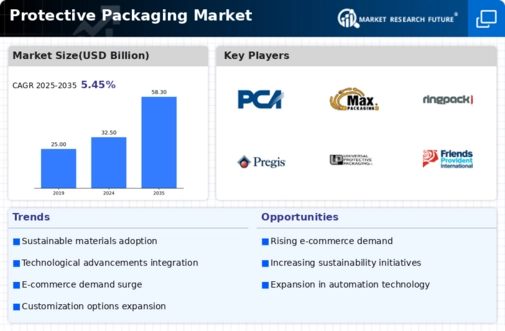Market Analysis
In-depth Analysis of Protective Packaging Market Industry Landscape
The protective packaging market is a fast growing market that stakes a lot on how their packages could work as a barrier of the product from manufactures to consumers. The dynamics of this market are influenced by some number of things which are crucial in increasing the demand for protective packaging. One of the important factors is the constant increase of online facilistation. Online shopping has grown immensely in popularity which by turn has led to an increased need for sustainable packaging materials for products to make sure they are undamaged and that they get to the customers safely. As a result of this, the commodities that are particularly fragile, susceptible to impact, condensation and other potential dangers are increasingly seeking package materials that offer much better protection.
Furthermore, environmental worries not only have steered the development of this market but also have been a global concern. As this trend grows toward sustainability, the market is also following it and a well-known practice is embracing recyclable and eco-friendly materials. Along the production chain, producers are concentrating on coming up with solutions in packaging that not only offer the needed protection but also the reducing of the ecological footprint. This pose has evolved the customers' preferences and has led the companies to innovate and invest in materials that either biodegrade or are recyclable as compared to...the environmental factor.
The categories of products being shipped are also key determinants in terms of mainly shaping the market dynamics of protective packaging. Perishable and delicate things can be quite demanding, such astthe electronics and glassware that are packed using specialized protection against the cracks or the damage. For example, industries are compensating the personalized packaging solutions for producing intricate and more expensive products by increasingly commoditizing protective packaging which addresses unique requirements of different products. This resulted in the development of various protective packaging materials on the market, where manufacturers offer a wide variety of items as from bubble wraps, foam through to air pockets or corrugated boxes.
In addition to this, global trade structures and benefits of logistics corroborate with packaging protection sector. Being aware of the fact that supply chains become more networked and hi-tech at regional level, good packaging becomes essential rather than a good-to-have option, sine the warp-and-weft pose great risks for the products. The journey of commodities between origins and destinations through several types of transit, such as air, sea, and land, is exposed to different degrees of risks. The shipment protective packaging materials have to become more advanced to meet for the amainsturcting challenges, shipping them to the termination point uninjured. This process can offer solutions in development of protective packaging that is durable, highly tolerant to blows, and stiff against temperature change.










Leave a Comment